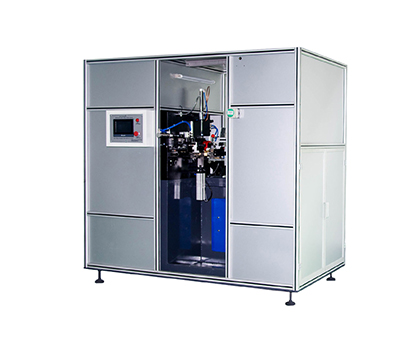By Products
Welding Machine
By Application
Automation Production Line

Search
High frequency welding machines have revolutionized various industries, from textiles and packaging to automotive and electronics. These machines utilize cutting-edge technology to join materials through high-frequency electromagnetic waves. In this blog, we will delve into the high frequency welding machine working principle, exploring the intricacies behind their operations and their significance in modern manufacturing processes.

High frequency welding is a technique used to join materials together using high-frequency electromagnetic waves. These waves penetrate the materials and cause the molecules to move, generating heat. As a result, the materials soften and fuse together, creating a strong bond.

High frequency welding machines comprise three essential components: a high frequency generator, an oscillator, and an electrode assembly. Let's discuss each component's role in detail.
High Frequency Generator
The high frequency generator is the heart of the machine. It converts the electrical power from the standard alternating current (AC) into a high-frequency alternating current (HFAC) ranging from 27.12 MHz to 40.68 MHz. This high-frequency power is vital for the proper functioning of the welding process, ensuring strong and durable welds.
Oscillator
The oscillator converts the HFAC produced by the high frequency generator into high-frequency voltage. It amplifies and stabilizes the power output to provide the necessary voltage required for welding. The oscillator's role is crucial in maintaining the uniformity of the electromagnetic waves generated during the welding process.
Electrode Assembly
The electrode assembly consists of two electrodes: a stationary electrode (the electrode of the high-frequency welding machine) and a movable electrode (the welding tool connected to the machine). These electrodes apply pressure on the materials to be welded, ensuring good contact and uniform distribution of heat.

The high frequency welding process involves the following steps:
1. Materials Preparation: The materials to be joined are prepared by cleaning, cutting, and aligning them for welding.
2. Electrode Set-up: The stationary and movable electrodes are set according to the shape and size of the materials to ensure optimal contact.
3. Pressing and Heating: The materials are placed between the electrodes, and pressure is applied to keep them in place. The high-frequency electromagnetic waves are then activated, causing the molecules to vibrate and generate heat. This heat softens the materials and allows them to fuse together.
4. Cooling and Finishing: Once the desired weld is achieved, the electromagnetic waves are turned off, and the materials are allowed to cool. Cooling time depends on the type and thickness of the materials being welded. After cooling, the finished product is removed from the machine.
High frequency welding machines play a vital role in modern manufacturing processes, providing efficient and precise bonding capabilities. Understanding their working principle enables us to appreciate their significant contribution to various industries. The high-frequency electromagnetic waves generated by these machines facilitate the softening and fusion of materials, resulting in strong and durable welds. As technology continues to advance, high frequency welding machines are likely to evolve, promising even greater efficiency and quality in material bonding.
No. 28 Jinteng Road, Wuxiang, Yinzhou District, Ningbo
Copyright © NINGBO XIHE AUTOMATION EQUIPMENT CO.,LTD. All Rights Reserved.